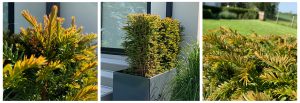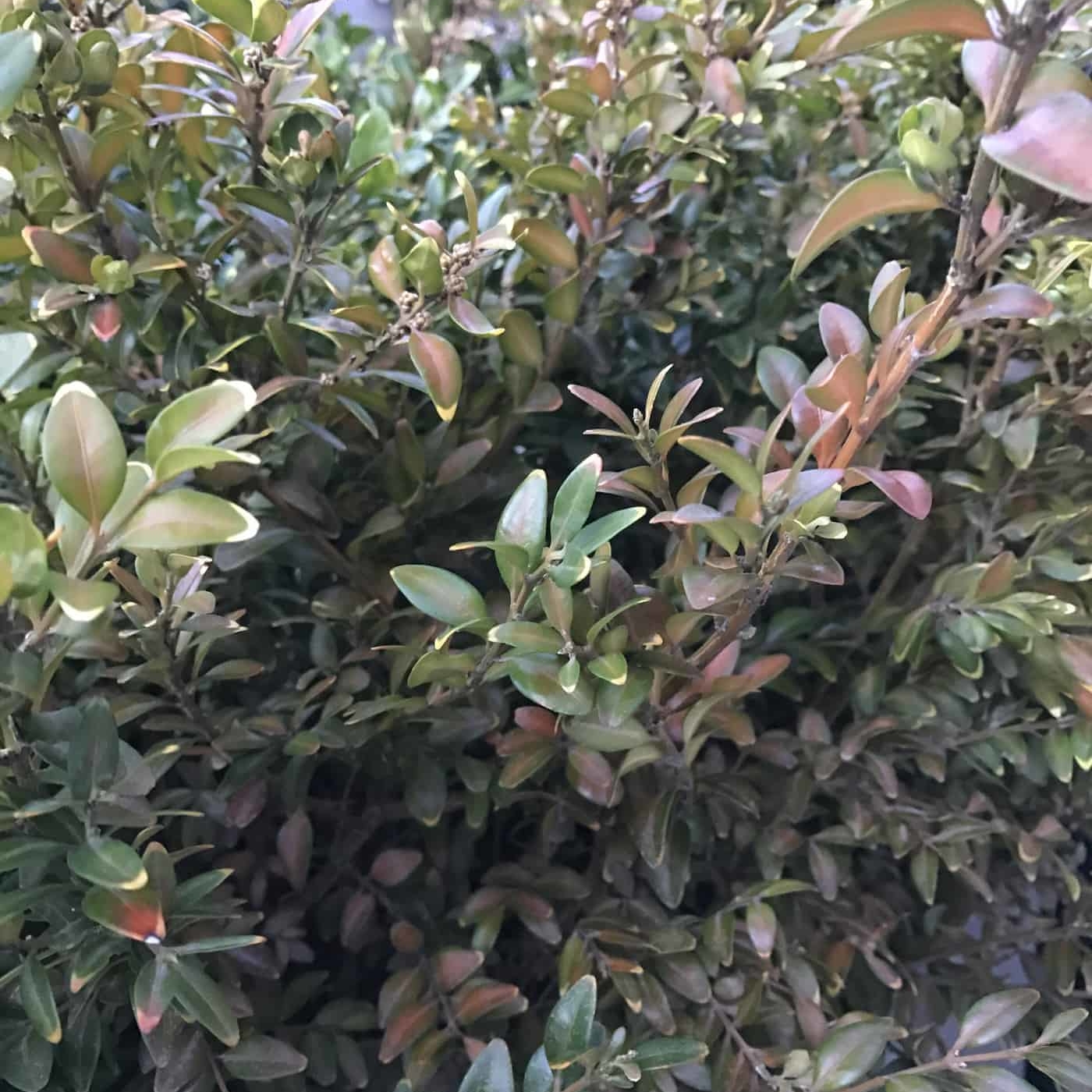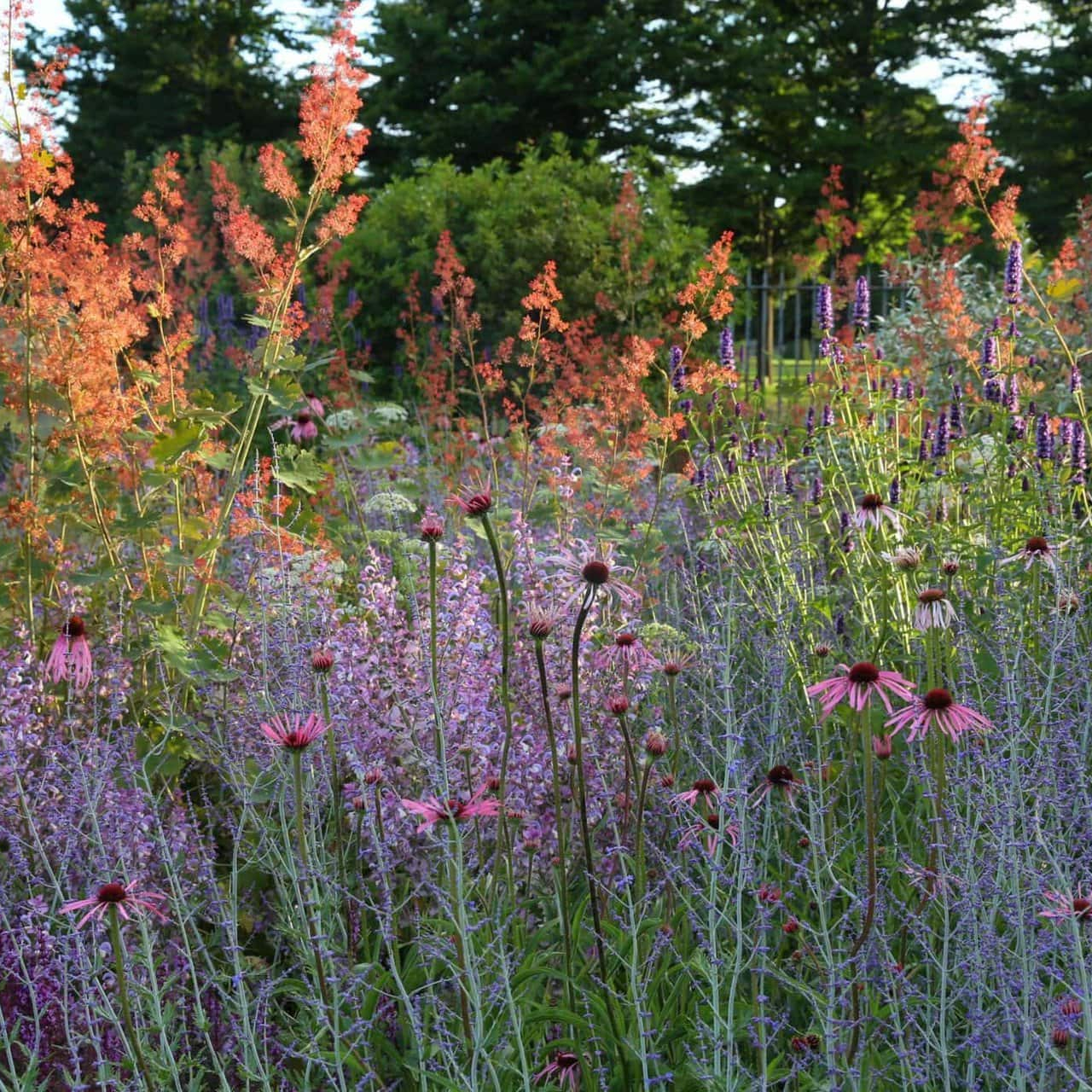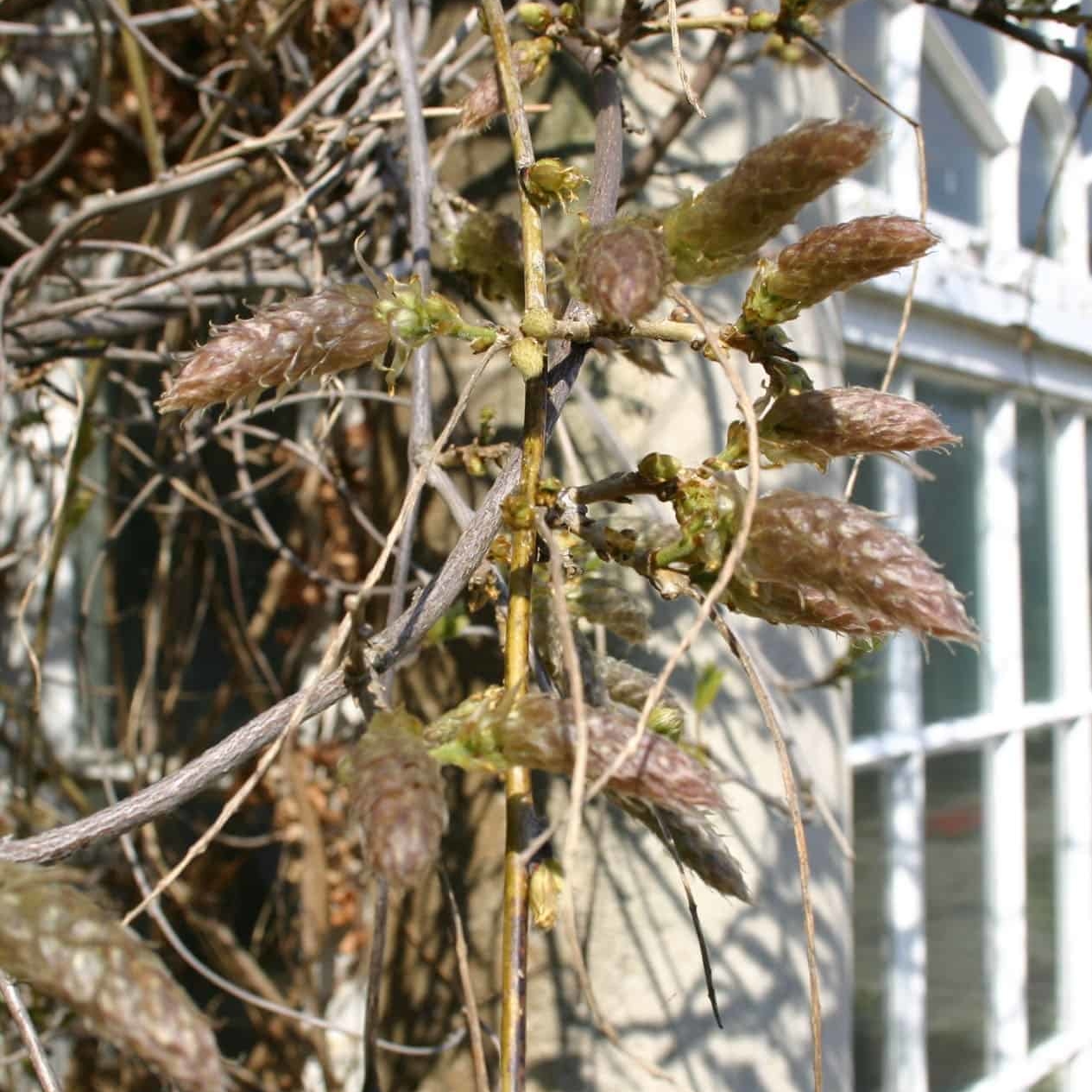Why is my Taxus turning brown?
A very common question we get asked as a garden design studio is “Why is my taxus turning brown?” Bronze foliage is probably the most common affliction of newly planted Yew and can be especially noticeable in hedging when individual plants go bronze, contrasting with their lush green neighbours.
Although Taxus baccata is an extremely robust and reliable plant once established, with a lifespan of say 4000 plus years; it can often show signs of failing to thrive after planting which can be disconcerting.
Unfortunately, there isn’t really a one size fits all answer but, in all cases, it is a sign that the plant is currently experiencing or has previously experienced some level of stress. There are many reasons why this may occur, and finding the cause is a process of elimination and observation.
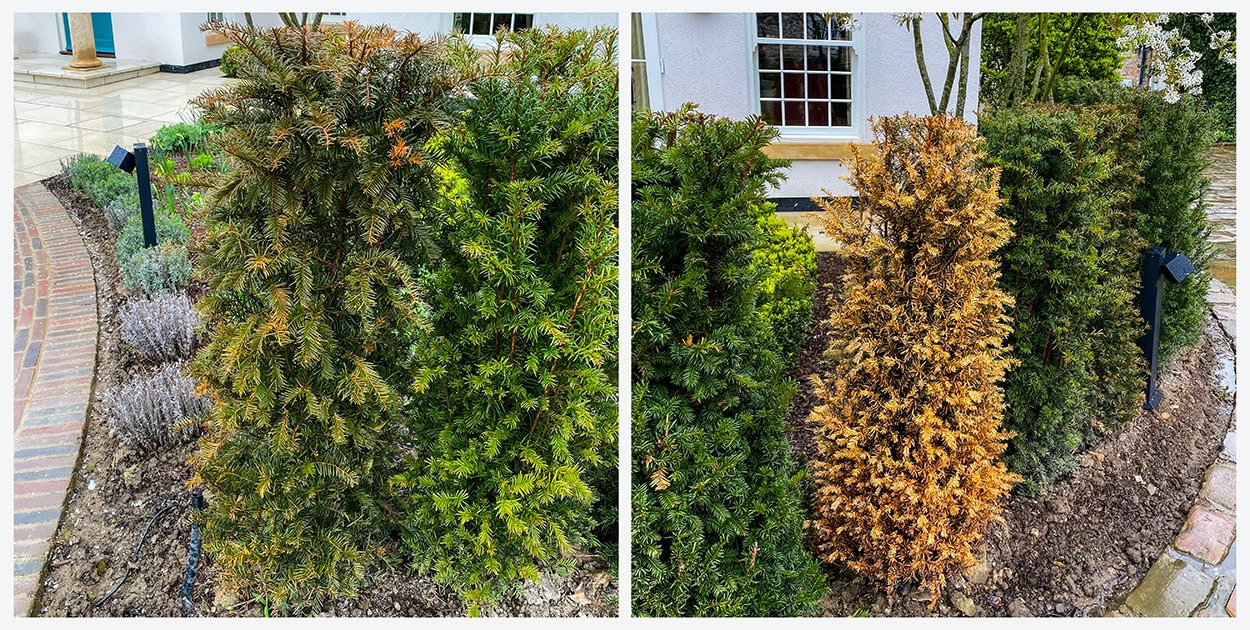
New growth
Soft, young yew growth is often light bronze in colour and it greens up as it hardens. If it doesn’t green up as the foliage matures, the bronzing will be due to another reason.
Severe wet
The most common problem for Yew bronzing is wet feet and over watering. If you have heavy soil that doesn’t drain well, it can lead to standing water around the roots, causing rotting and disease setting into the root system. Planting preparation can make a big difference if your soil is not ideal. Adding grit to the whole area and installing a land drain may help but alternative evergreens such as Prunus lusitanica are a good option for heavy soils.
Phytophthora & Root Rot
Phytophthora causes root rot, destroying feeder roots and hindering access to nutrients. This is a fungal pathogen that thrives in wet soil, especially in autumn and winter, and is fatal to many plants, including Yew. Signs of root rot include bronzing leaves near the stem. If green buds remain, the plant may recover with improved drainage. Otherwise, replace Yew with a disease-resistant variety like Carpinus betulus (Hornbeam), which is adapted to heavy soils.
Transplant Shock
Yew can experience transplant shock, showing bronzing and looking unhappy for a year or two in suboptimal conditions. If new green buds and fresh white root growth are present, the plant will likely recover. Be patient; it should turn green and healthy again soon!
Nutrient Imbalance
New Taxus plants may take up to 3 years to acclimate and establish in garden conditions, reducing nutrient uptake until roots are fully established. By the fourth year, Mycorrhizal fungi often form a symbiotic relationship with the roots, enhancing nutrient absorption. Mulching with well-rotted organic, compost can replenish soil nutrients and improve soil quality.
Windburn
Windburn often affects newly planted Yews in their first few years, causing leaf drought and cell death. As Yews mature and develop deeper roots, they cope better, though growth may slow. For protection, consider a sheltered location, install an irrigation system (avoid overwatering), or add windbreaks like slatted fences, taller plants, or trees.
Heavy Frost
Heavy frost dehydrates young or exposed foliage, as frozen water is inaccessible. This mainly affects younger plants in their first few years. The damage is usually cosmetic and unsightly, but the plant will recover.
Hot/Dry Weather
Young roots can quickly dry out in hot weather. Adding mulch around the base of plants helps prevent moisture loss, but ensure soil is moist before application. While established Yews are drought-resistant, young plants need regular watering until they establish a good root system. Consider a timed irrigation system in dry seasons, ensuring well-drained soil to prevent waterlogging.
Animal Damage
Dieback in yew can result from animals using the hedge as a toilet, causing a build-up of uric acid that alters soil pH and leads to leaf browning. Damage to bark from rabbits or people can have similar effects. Take care when pruning and maintain your yew, and deter animals from damaging the bark or toileting nearby.
Salt Damage
If your yew is near a road or driveway treated with de-icing salts, the salts can dissolve in melting snow or rain, contaminating the soil. Adverse effects, seen in early spring, include die back and brown patches from salt splashes, or stress and bronzing from salt absorption by roots. Avoidance is best, or flush the soil with water (if well-drained) to wash away salt.
Healthy Taxus with new growth – Taken by Harvey Dyson, garden by Bestall & Co.
Summary: Preventing Your Taxus Turning Brown
Bronzing in yew can typically be cured with patience, as yew is resilient and can recover even when appearing dead. If bronzing starts at leaf tips rather than the base, it’s likely not serious. Assess and prepare soil before planting to prevent stress and ensure success. Remember, garden establishment takes time, ranging from months to a couple of years depending on conditions. While instant impact is desired, gardening is about nurturing a living entity. Consider leaving bronzed plants for a couple of seasons to improve with time. If you would like more information about the yew hedge, visit the RHS website here.
Emily Barnes
Emily joined the Bestall & Co team as a Garden Designer and Project Lead after attaining a degree in Horticulture at Nottingham Trent University. Achievements include coming in the top 3 at the Northwest and North Wales Regional Final of The Young Horticulturist of the Year 2019 and winning the People’s Choice Award for her garden ‘Elements of Sheffield’ at RHS Chatsworth Flower Show. Emily has a keen eye for design detail, a passion for all things plants, as well as a deep love for the great outdoors and wildlife.

